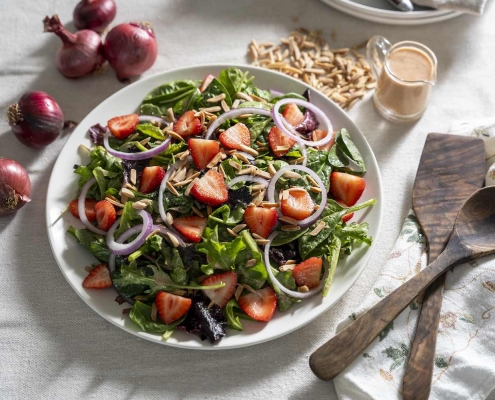 https://www.edibleasheville.com/wp-content/uploads/2025/03/Strawberry-Salad-1.jpg
1000
1500
tennille
https://www.edibleasheville.com/wp-content/uploads/2016/07/Edible-Asheville-Logo-2.png
tennille2025-03-02 16:15:532025-03-02 16:15:53Fresh Strawberry Dressing on Salad Greens
https://www.edibleasheville.com/wp-content/uploads/2025/03/Strawberry-Salad-1.jpg
1000
1500
tennille
https://www.edibleasheville.com/wp-content/uploads/2016/07/Edible-Asheville-Logo-2.png
tennille2025-03-02 16:15:532025-03-02 16:15:53Fresh Strawberry Dressing on Salad GreensThe Flowing Bowl
How to celebrate with punch
By Chall Gray
Perhaps your house is decorated to a level of excess that might impress even Clark Griswold, of National Lampoon’s Christmas Vacation. Perhaps your family’s version of Cousin Eddie will be showing up soon in a polyester sweater, bringing two large dogs who will forever alter the scent of your guest-room carpet. Perhaps you need a drink just to cope with the thought, much less the reality.
Or perhaps your life more closely resembles a magazine feature: the halls are decked, the fire crackles, and friends and family gather to toast the season, their index fingers inserted semi-comfortably into the tiny handles of glass cups.
The bottom line is this: there are many valid reasons to make a bowl of punch this time of year. In fact, the time of year is itself a valid reason to make a bowl of punch.
Punch has endured for ages. By the time the cocktail was first documented, just after 1800, punches had already been around for a couple hundred years. As David Wondrich notes in Punch, his rambunctious history of the flowing bowl, if you open nearly any book written between 1600 and 1900 that describes daily life—think Swift, Defoe, Byron, Fielding, Austen, Dickens—sooner or later someone will make a bowl of punch. Following Andrew Jackson’s inauguration, the White House was so overrun by revelers that the only way to make the crowd leave was to move the barrels of American Orange Punch to the lawn.
Sadly, the past few decades have left many people with the impression that punch is a cloying concoction—located in the yard, perhaps near the ice luge—consisting of soda, ersatz juices, and clear spirits that often transports the drinker swiftly toward the land of inebriation and tooth decay.
But there is more to punch than you may think. With a fairly minimal amount of advance work you can inspire your guests to leave the Cold Mountain in the fridge and the Pinot Noir on the counter as they tipple away in the true spirit of the holidays.
Chall Gray lives in Asheville and is the cofounder and CEO of Slings & Arrows Craft Spirits, which will be releasing a line of bottled craft cocktails in 2017. He has designed and opened several bars, including Top of the Monk in downtown Asheville.
Baltic Nog
by Chall Gray
Ingredients
5 eggs*
8 ounces simple syrup**
12 ounces whole milk
12 ounces Baltic porter (Duck Rabbit recommended)
8 ounces Cognac
1 split vanilla bean
4 pinches ground nutmeg
Directions
Whisk or beat together eggs, milk, and simple syrup. Add other ingredients and large cubes of ice. Stir, garnish with nutmeg, and serve.
*Use caution when consuming raw eggs, due to the slight risk of food-borne illnesses.
**To make simple syrup, mix equal parts cane sugar and water and heat until combined.
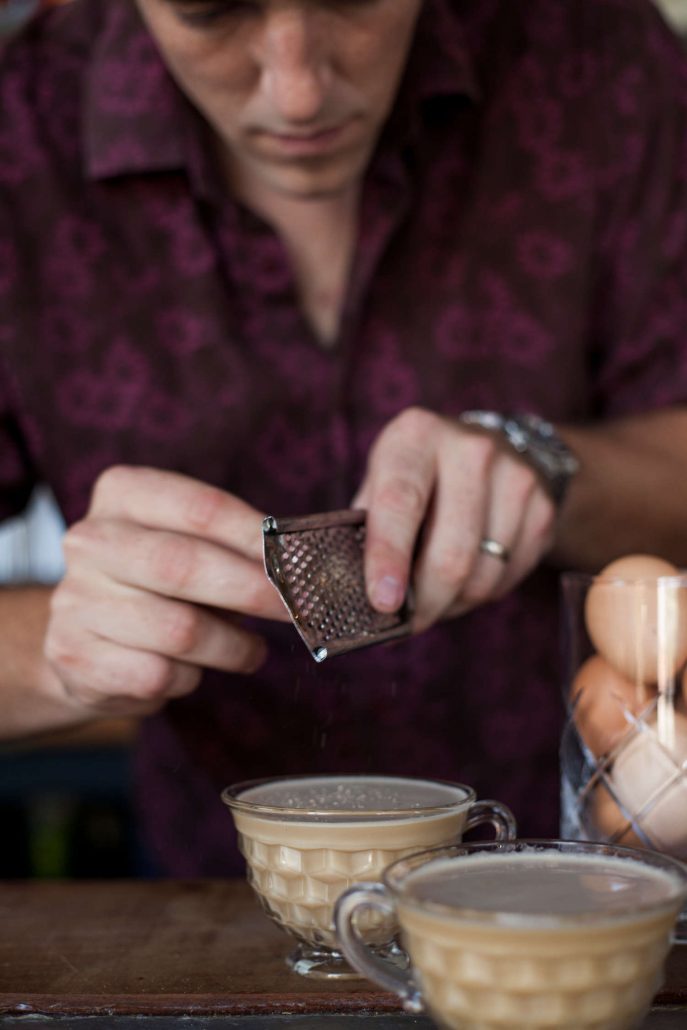
Chall Gray preparing Baltic Nog. Photos by Erin Adams.
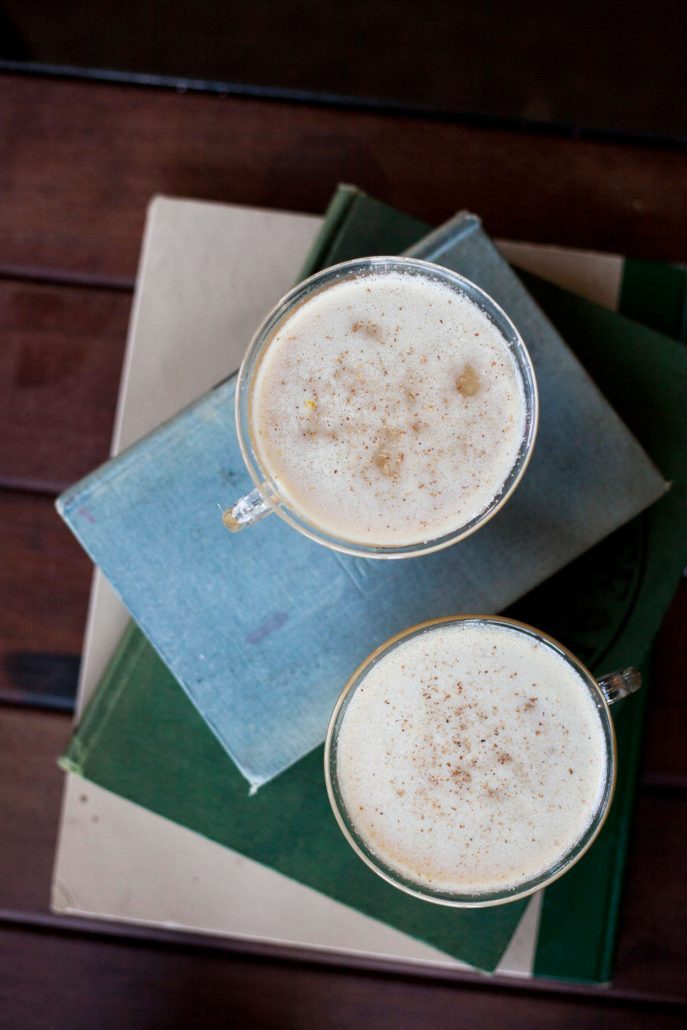
Payne’s Punch
By Charles Hodge, owner of Sovereign Remedies
Ingredients
Liquid from 16-ounce jar preserved oranges*
4 ounces lime juice
4 ounces lemon juice
1 bottle Salignac Cognac
1 bottle Prosecco
4 ounces Harlequin Orange Liqueur
Directions
Combine ingredients in a punch bowl with a block of ice or large ice cubes. Stir and serve.
*To make preserved oranges: peel 6–10 oranges, break into segments, mix in bowl with 2 cups sugar, and pack into 16-ounce jar. Place jar in refrigerator. After five days, blend oranges and sugar into puree and strain through cheese cloth to separate liquid.
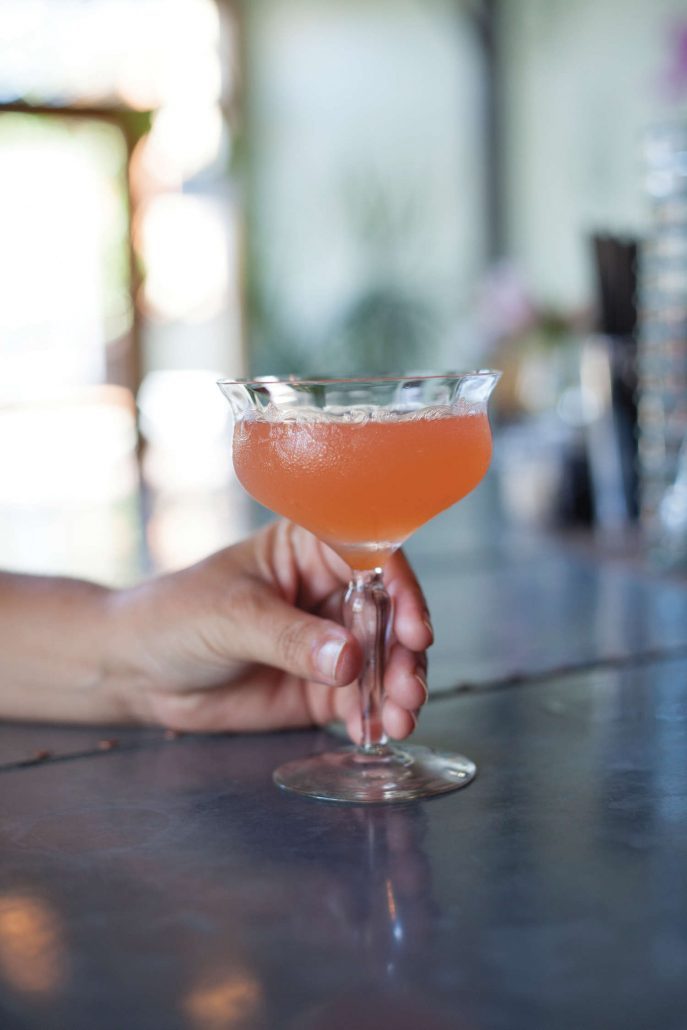
You might also like…
 https://www.edibleasheville.com/wp-content/uploads/2025/03/Strawberry-Salad-1.jpg
1000
1500
tennille
https://www.edibleasheville.com/wp-content/uploads/2016/07/Edible-Asheville-Logo-2.png
tennille2025-03-02 16:15:532025-03-02 16:15:53Fresh Strawberry Dressing on Salad Greens
https://www.edibleasheville.com/wp-content/uploads/2025/03/Strawberry-Salad-1.jpg
1000
1500
tennille
https://www.edibleasheville.com/wp-content/uploads/2016/07/Edible-Asheville-Logo-2.png
tennille2025-03-02 16:15:532025-03-02 16:15:53Fresh Strawberry Dressing on Salad Greens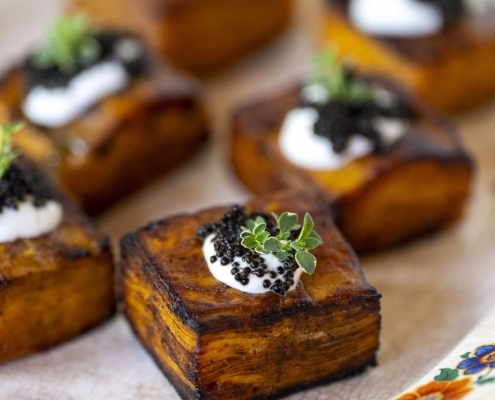 https://www.edibleasheville.com/wp-content/uploads/2025/02/Recipes-2.jpg
2250
1500
tennille
https://www.edibleasheville.com/wp-content/uploads/2016/07/Edible-Asheville-Logo-2.png
tennille2025-02-05 08:54:542025-03-05 11:31:55Sweet Potato Pavé
https://www.edibleasheville.com/wp-content/uploads/2025/02/Recipes-2.jpg
2250
1500
tennille
https://www.edibleasheville.com/wp-content/uploads/2016/07/Edible-Asheville-Logo-2.png
tennille2025-02-05 08:54:542025-03-05 11:31:55Sweet Potato Pavé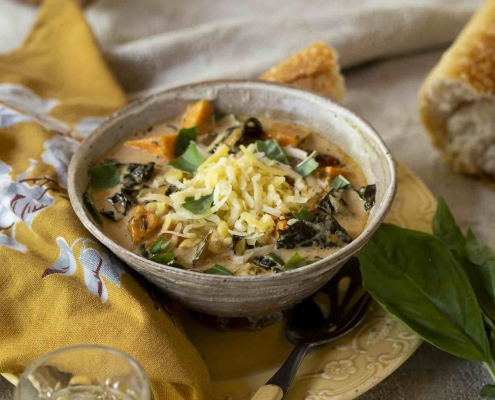 https://www.edibleasheville.com/wp-content/uploads/2024/09/Sweet-Potato-Zuppa-2.jpg
2250
1500
tennille
https://www.edibleasheville.com/wp-content/uploads/2016/07/Edible-Asheville-Logo-2.png
tennille2024-09-04 13:34:032024-10-16 12:50:20Sweet Potato Zuppa
https://www.edibleasheville.com/wp-content/uploads/2024/09/Sweet-Potato-Zuppa-2.jpg
2250
1500
tennille
https://www.edibleasheville.com/wp-content/uploads/2016/07/Edible-Asheville-Logo-2.png
tennille2024-09-04 13:34:032024-10-16 12:50:20Sweet Potato ZuppaTHE WEEKLY REVEL
Sign up for your free handpicked guide to enjoying life around Asheville.
Available weekly from May to October.





